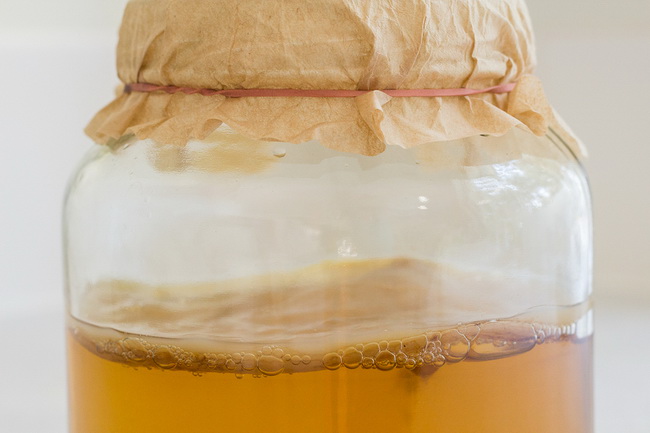- Make It Yourself Lavender Heart-Shaped Bath Bombs!
- 20 Things You Never Knew About “Down There”
- 12 Best Foods For Those Suffering From Arthritis Pain
- 12 Personal Hygiene Mistakes Almost Everyone Makes (Mom Never Told You About #4!)
- 15 Medicinal Plants And Herbs From The Cherokee People
- 12 Mind-Blowing Benefits Of Drinking Coconut Water During Pregnancy
- 12 Outstanding Winter Foods That Won’t Fatten You Up Like A Christmas Turkey
How to Make Kombucha at Home Cheap and Easy

Photo credit: bigstock.com
OK, so if you’ve been reading about how great kombucha is for your health, or if you’ve been paying $4 or more for those bottles of kombucha and you are wondering if you can get it cheaper, or if you are just one of those DIY types that wants to…well…do it yourself, then this is the article you have been waiting for.
If you are one of the few people who hasn’t gotten on the kombucha train, briefly, kombucha is a fermented, sweetened tea that has been around for thousands of years. It has a slightly tangy but sweet flavor that is absolutely delicious. But it has so much more to offer than just a sweet tasty change of beverage: kombucha contains probiotics, glucaric acid, B vitamins, and is loaded with antioxidants. This means kombucha can help detox the liver, give you energy that lasts all day long, improves digestion, supports the immune system, helps with negative feelings such as depression and anxiety, and improves the function of the pancreas, just to name a few. Read more about top reasons why you should drink more kombucha.
This method is called “continuous brew.” As the name suggests, it’s made in batches, then re-started by using a little bit of the liquid from the previous batch and by using a small piece of the SCOBY (Symbiotic Colony of Bacteria and Yeast). This method will give you a much more “fresh” tasting brew and will help your kombucha brew faster. There are other means of making kombucha, but this method is nutritional and practical. It gives you less of a risk of developing mold or having your kombucha contaminated. It’s more acidic, which makes it less inviting to bacteria. This method will also give you a more consistent supply of kombucha, such as a few bottles each day, rather than having one large batch all at one time that might go bad if no one drinks it all.
You will need to have a kombucha container with a spigot so you can remove some of your kombucha without disturbing the rest. It should be between 1 and 5 gallons in size (for a family, look for a 5 gallon size, if it’s just you or you and your mate, then 1 gallon is probably good) and it should be either a glass or porcelain container. Other types of containers, such as plastic, metal, or ceramic, cause problems with the brew. Be sure it has a spigot near the bottom of the container. Be certain that the spigot is not lined with metal on the inside! Metal will kill off the bacteria.
Your container should have a cover but not necessarily an airtight cover. You want to allow some of the gasses to escape, but you want to keep out dust, bacteria, flies, ants, and fruit flies. If you find a great container but it lacks a lid, you can always use a tightly woven towel or even a couple coffee filters secured with a rubber band. Many people find that 2 gallon Mason jars with a spigot work well. If you find a container that works well but the spigot is metal or lined with metal, replace it with a plastic container. It sounds complicated, but once you start looking, you will be surprised at the variety of containers that will work for you and how readily available they are.
Continue to Page 2





























